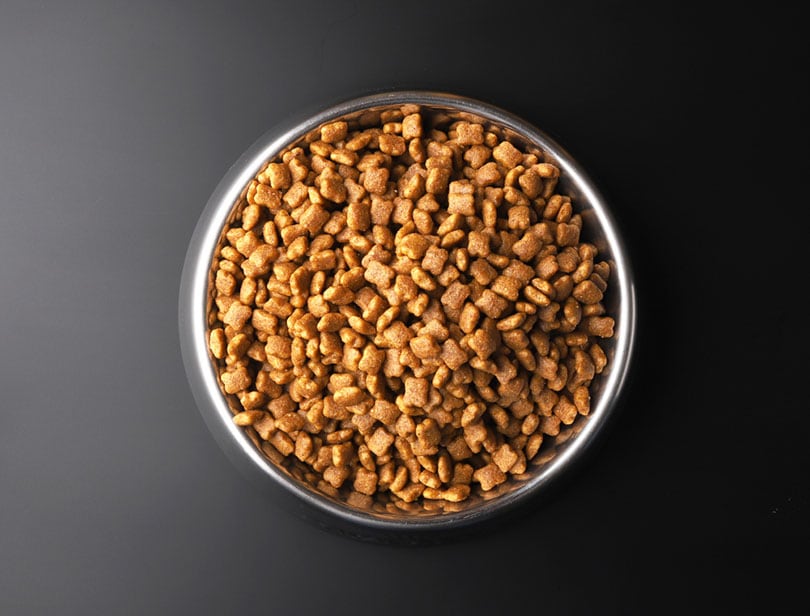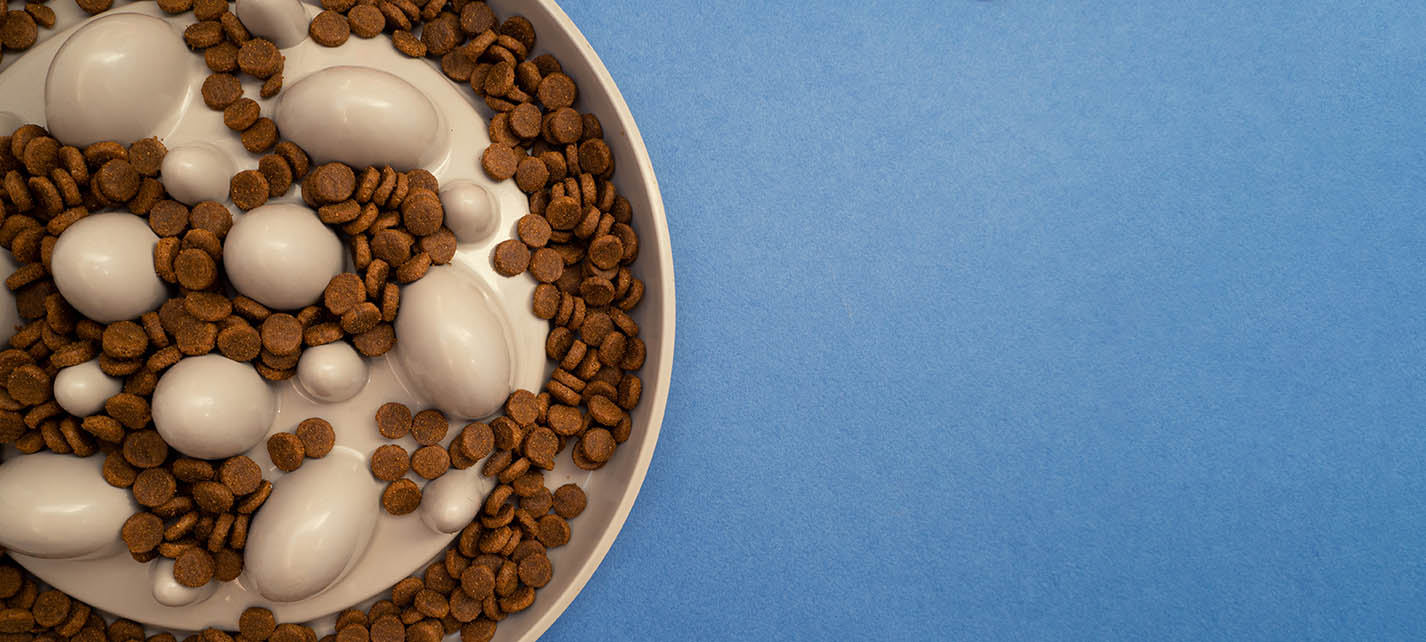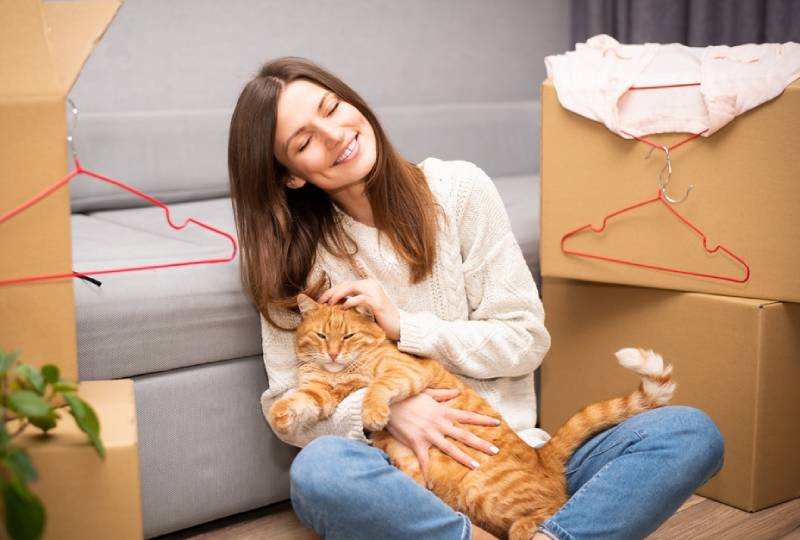When Can Kittens Eat Dry Food for the First Time? Vet Approved Facts & FAQs
Updated on

Whether kittens are raised by their mother or bottle-fed by humans, they rely on the nutrition of mom’s milk or kitten formula to power their growth for the first weeks of life. However, they cannot nurse forever, so when is the right time to transition to solid food? Kittens can eat dry food for the first time when they are around 4 weeks old, but you will need to soften it with liquid as they learn to chew.
Keep reading to learn how to introduce young kittens to dry food, plus more details about the weaning process. We will also give tips on choosing the right diet for your kitten and how often to feed them.
Starting Kittens on Dry Food
Until they are about 4 weeks old, kittens should drink only their mother’s milk or bottle-fed formula if they are orphaned. Once the kittens’ eyes are completely open, and they are steady on their feet, it is okay to start introducing solid food.
You may need to start by offering formula in a bowl so they can learn to drink. Use your finger to smear some formula on the kittens’ mouths to encourage them to search out the bowl. Do not push their face into the bowl; they may choke or inhale the formula.
Once the kittens are comfortable using a bowl, dry or canned food can be mixed with formula or water to make it more of a slushie consistency. Gradually decrease the amount of liquid added to the dry food over 1–2 weeks. At 5–6 weeks old, kittens should be able to eat lightly moistened dry food.

Weaning a Kitten
At around 5–6 weeks, kittens should have dry food constantly available for eating in addition to continuing to nurse. The mother cat will begin weaning them at this time as well. You can help by creating a separate space for the kittens to spend a few hours away from their mother, with access to food and water.
Next, you will decrease the liquid you add to the kittens’ dry food until they can eat it without any additional moisture. Fresh, clean water should always be available. By 8 weeks, the kittens should be fully transitioned to dry food from nursing. Orphaned kittens can be weaned faster and switched to solid food around 6–7 weeks. Make sure to keep the baby cats warm and clean as they complete the weaning process. Many kittens play with their food until they learn it’s for eating, which can result in quite a mess!
Choosing a Dry Food for Your Kitten
Because the first year of life is spent growing and developing, kittens have different nutritional needs than adult cats. For example, they need increased levels of amino acids, minerals, and protein. Ensure these dietary requirements are met by feeding a diet formulated for kittens.
Although some brands produce diets labeled for “all life stages,” it is best to avoid feeding those to kittens unless the nutrition claims are supported by feeding trials and research. Stick with a diet labeled as meeting the nutritional requirements for kittens established by the American Association of Feed Control Officials (AAFCO.) Your vet can suggest some brands that meet this specification.
Young kittens may need to eat canned food in addition to dry, to ensure they are getting enough calories while their teeth are still small. Don’t feed your kitten a homemade diet unless you ask your veterinarian for help formulating the food. Homemade diets often lack essential nutrients and can lead to health concerns for your kitten.
How Much Dry Food Should You Feed Your Kitten?
Most commercial dry foods have suggested feeding amounts on the label. Your vet can also assist you in determining how much food to feed your kitten. Kittens should eat about three to four times a day until they’re around 4–6 months old. Free feeding until this age is also an option as long as the kitten is at a healthy weight.
Meals can be decreased to twice a day for older kittens. Feed kitten food until about 1 year old or until your veterinarian recommends that you transition the cat to an adult diet. Make sure your cat always has fresh water available. When it’s time to switch to an adult diet or if you need to change to a new brand of kitten food, make the transition slowly over about a week to avoid upsetting your cat’s stomach.
The ideal cat bowl will be there with your kitten as they grow and last them well into adulthood, which is why our Hepper NomNom Cat Bowl was designed to cater specifically to the needs of our feline companions at any age. The stainless steel, shallow bowls are the perfect depth for kittens who would otherwise struggle to reach the bottom of traditional bowls and offer whisker support for future feedings as they mature. Invest in something as practical and fun as your kitty - our Hepper NomNom Cat Bowl.
Conclusion
Kittens can begin eating moistened dry food around 4 weeks old before fully transitioning to kibble by 7-8 weeks. If you are raising orphaned kittens or caring for a mother and her litter, work with your veterinarian to ensure the babies get the appropriate health checks, vaccines, and deworming. Kittens should usually stay with their mother until at least 8 weeks. Some breeds do best if they don’t go to new homes until around 10-12 weeks later. With the right nutrition and care, kittens will head to their new families with a healthy start in life.
Featured Image Credit: MaraZe, Shutterstock













